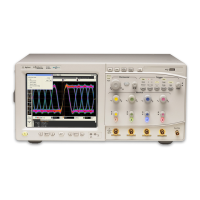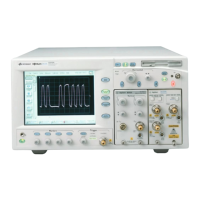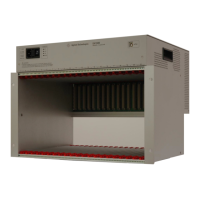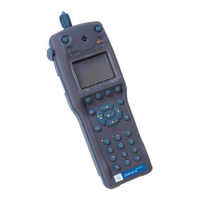66
Troubleshooting
This section provides troubleshooting information for the Agilent Technologies 80000
Series oscilloscopes. The service strategy of this oscilloscope is replacement of defective
assemblies.
Safety
Read the Safety Notices at the back of this manual before servicing the oscilloscope.
Before performing any procedure, review it for cautions and warnings.
WARNING SHOCK HAZARD!
Maintenance should be performed by trained service personnel aware of the hazards involved
(for example, moving parts, fire and electric shock). Lack of training and awareness of the
hazards could result in electrical shock or other injury. When maintenance can be performed
without power applied, the power cord should be removed from the oscilloscope.
WARNING INJURY CAN RESULT!
Use caution when working around the cooling fan with the cover removed from the oscilloscope.
The cooling fan blades are exposed on one side and can be hazardous. Install the optional fan
safety shield (Agilent Technologies P/N 54810-00601) for protection from the moving fan blades.
Tools Required
You will need basic electronic troubleshooting tools, including a digital multimeter and
a 100 MHz (or faster) oscilloscope.
If you need to remove and replace assemblies, see chapter 6, “Replacing Assemblies.”
ESD Precautions
When using any of the procedures in this chapter, you must use proper ESD precautions
to protect the oscilloscope components from ESD damage. Failure to follow proper ESD
control procedures may cause immediate failure or latent damage. Latent damage may
result in equipment failure after a period of time. As a minimum, you should place the
oscilloscope on a properly grounded ESD mat and wear a properly grounded ESD wrist
strap when working on the oscilloscope.
Keystroke Conventions
To guide you while setting up the oscilloscope, the following conventions are used to
represent keystrokes and other interactions with the oscilloscope:
• When you need to issue a command through the graphical interface, the command
will be phrased like this: “Select <command> from the <menu name> menu.”
• When you need to select an object on the graphical interface, the instructions will
be phrased something like this: “Select the OK button.”
• When you need to press a key the instructions will be phrased something like this:
“Press the Run key.”

